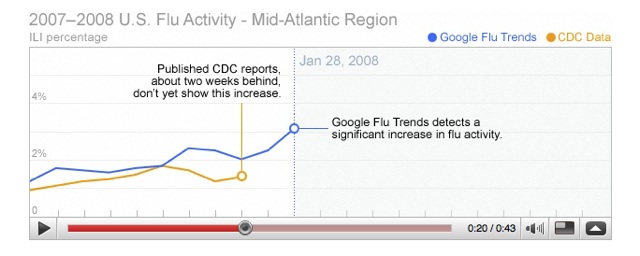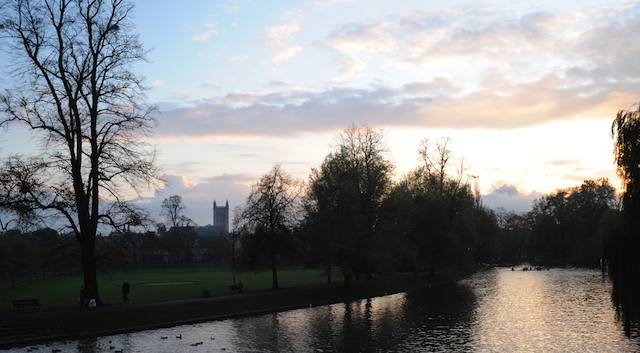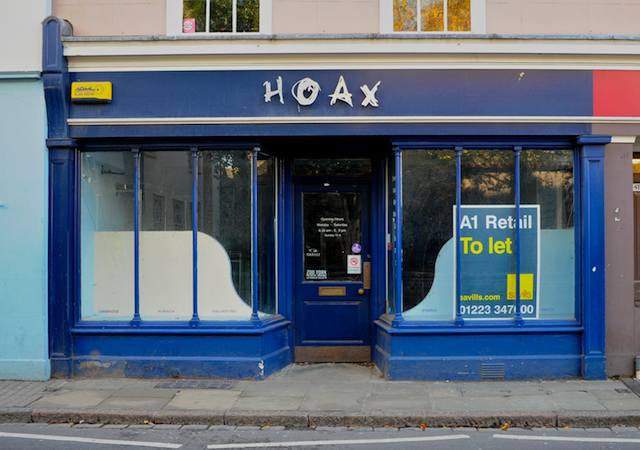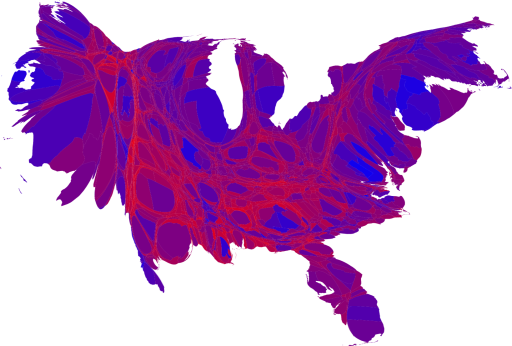“Leadership cannot really be taught. It can only be learned.”
Harold Geneen, the guy who transformed ITT into the 11th largest company in the US.

“Leadership cannot really be taught. It can only be learned.”
Harold Geneen, the guy who transformed ITT into the 11th largest company in the US.
From Technology Review…
Researchers at the University of California, Berkeley, hope that drivers with GPS-enabled smart phones will help them gather more-accurate and up-to-date traffic data. Starting Monday, volunteers in the San Francisco Bay Area and around Sacramento will be invited to participate in a pilot program by downloading software that tracks their movements and transmits this information, via the phone network, back to a server at the university. In return, the volunteers will receive personalized traffic information on their cell phones.
The idea is simple, says Alex Bayen, a professor of civil and environmental engineering at the university. “Smart phones with GPS collect data from a regular commute and send it to a central system,” he says. “The system puts the data into a mathematical model that estimates traffic in real time and then broadcasts it back to the Internet and phones.”
The researchers’ model combines traffic data collected from static road sensors as well as from volunteers’ cell phones. Participants will receive personalized information such as travel-time estimates and traffic speeds along relevant routes.
David Remnick has a terrific essay in the New Yorker reflecting on Obama’s campaign and the role that race played in it. As with everything Remnick writes, it’s beautifully crafted and thoughtful. It ends like this:
Just a few minutes before eleven last Tuesday night, when Barack and Michelle Obama and their daughters walked out on the stage at Grant Park, and everyone around was screaming, chanting, and waving flags, the long campaign came to an end. Joy was in the faces of the people all around me, there was crying and shouting, but Obama seemed to bear a certain gravity, his voice infused not with jubilation but with a sense of the historical moment.
“If there is anyone out there who still doubts that America is a place where all things are possible, who still wonders if the dream of our founders is alive in our time, who still questions the power of our democracy, tonight is your answer,” he began.
Obama had done it one last time. Having cast himself in Selma twenty months ago as one who stood on the “shoulders of giants,” as the leader of the Joshua generation, he hardly had to mention race. It was the thing always present, the thing so rarely named. He had simultaneously celebrated identity and pushed it into the background. “Change has come to America,” Obama declared, and everyone in a park remembered until now as the place where, forty summers ago, police did outrageous battle with antiwar protesters knew what change had come, and that—how long? too long—it was about damned time.
The same issue also has an interesting article by David Grann pondering how John McCain — a fundamentally decent man by all accounts — will recover from running a campaign which betrayed all his former principles about not taking “the low road” adopted by George Bush and Karl Rove when they destroyed his Primary campaign in 2000. Did his graceful concession speech come too late to rescue his self-respect? How can he live with himself, given the way his campaign developed into the hate-fest of the last few weeks? We will see.
This is interesting — Google Flu Trends…
We have found a close relationship between how many people search for flu-related topics and how many people actually have flu symptoms. Of course, not every person who searches for “flu” is actually sick, but a pattern emerges when all the flu-related search queries from each state and region are added together. We compared our query counts with data from a surveillance system managed by the U.S. Centers for Disease Control and Prevention (CDC) and discovered that some search queries tend to be popular exactly when flu season is happening. By counting how often we see these search queries, we can estimate how much flu is circulating in various regions of the United States.
There’s a nice animation on the site showing how official health data lags Google searches.

The NYT has a report on this today.
Excerpt:
Tests of the new Web tool from Google.org, the company’s philanthropic unit, suggest that it may be able to detect regional outbreaks of the flu a week to 10 days before they are reported by the Centers for Disease Control and Prevention.
In early February, for example, the C.D.C. reported that the flu cases had recently spiked in the mid-Atlantic states. But Google says its search data show a spike in queries about flu symptoms two weeks before that report was released. Its new service at google.org/flutrends analyzes those searches as they come in, creating graphs and maps of the country that, ideally, will show where the flu is spreading.
The C.D.C. reports are slower because they rely on data collected and compiled from thousands of health care providers, labs and other sources. Some public health experts say the Google data could help accelerate the response of doctors, hospitals and public health officials to a nasty flu season, reducing the spread of the disease and, potentially, saving lives.
“The earlier the warning, the earlier prevention and control measures can be put in place, and this could prevent cases of influenza,” said Dr. Lyn Finelli, lead for surveillance at the influenza division of the C.D.C. From 5 to 20 percent of the nation’s population contracts the flu each year, she said, leading to roughly 36,000 deaths on average.


… in a nutshell.
If you want to see how our media ecosystem has changed, then click here. I found it via this insightful blog post by Peter Brantley. His commentary is worth quoting:
What’s notable is that the images are fairly informal — and they are on Flickr. This kind of photostream — not unique in itself — would previously, a generation ago, have been highly curated, entitled “The new presidential family waits for news,” and published the week following in Life or Look magazine. However, the Obama pictures appear less curated (or at least have that air), were published nearly instantly, and do not involve the mediation of traditional media. In fact, whether these are eventually printed or not as official administration photos is secondary, because they are available freely and publicly online.
Without benefit of any mainstream media publicity, the pictures were so popular that they brought down Flickr. Thus, this is an event worthy of notice: an expectation of democratic transparency in a federal government combined with a mere decade plus-old publishing infrastructure jointly craft a community around the globe. In a sense, the limited access of the photographer on that election night make this a callback to the effect of TV in the 1950s, when monolithic media broadcast a culture that was shared and discussed in the conversations of millions. Yet the means of this publication, and the premise of sharing, are profoundly different.
I think there’s one other interesting point to note. Up until this presidency, documentation such as the photoshoot routinely went en masse into archives, where it later established the basis for the Presidential Library. However, existing Presidential Libraries such as LBJ’s or JFK’s are faced with the challenge of reaching back into their collections to digitize materials and make them widely accessible, and they face significant policy, logistical, and funding challenges in doing so. The Obama administration will be publishing a great deal of material outbound — a digitally native presidency — at a magnitude far beyond any of its predecessors.
From Dave Winer…
Barack Obama, who’s running for the Senate in Illinois, spoke briefly at the Blogger’s Breakfast. He’s an up and coming star of the Democratic Party, according to David Weinberger, he’ll be President in 12 years.
The post was dated 26 July 2004.

This is Mark Newman’s ingenious cartographic way of representing how the US voted, down to county level. For more maps, see his special page on the subject.
From a NYT Interview with Eric Schmidt, Google’s CEO.
Q. Earlier this week, Google walked away from an advertising partnership with Yahoo, after the Justice Department said it was planning to block it on antitrust grounds. Yahoo said it would have defended the deal in court and that it was disappointed you chose not to. Was Google less committed to this deal than Yahoo?
A. We were unsuccessful in convincing the Justice Department of something which we strongly feel, which is that providing better value to advertisers would have occurred by virtue of this deal. We concluded after a lot of soul-searching that it was not in our best interest to go through a lengthy and costly trial which we believe we ultimately would have won.
Q. This is the first time that regulators have gotten in the way of a Google deal. Are you concerned that, as many antitrust experts believe, this will happen more frequently now? And if so, was it a mistake for Google to propose the deal in the first place?
A. We have no regrets about attempting to do the right thing from our perspective. With change comes risks. This is a risk that we understood. Now you ask a hypothetical question, which is, Given that that event has occurred, is there another scenario? We don’t see one right now, but you never know.
Q. Will Google think differently about deals after this incident?
A. Probably not. I think that this was a unique situation.